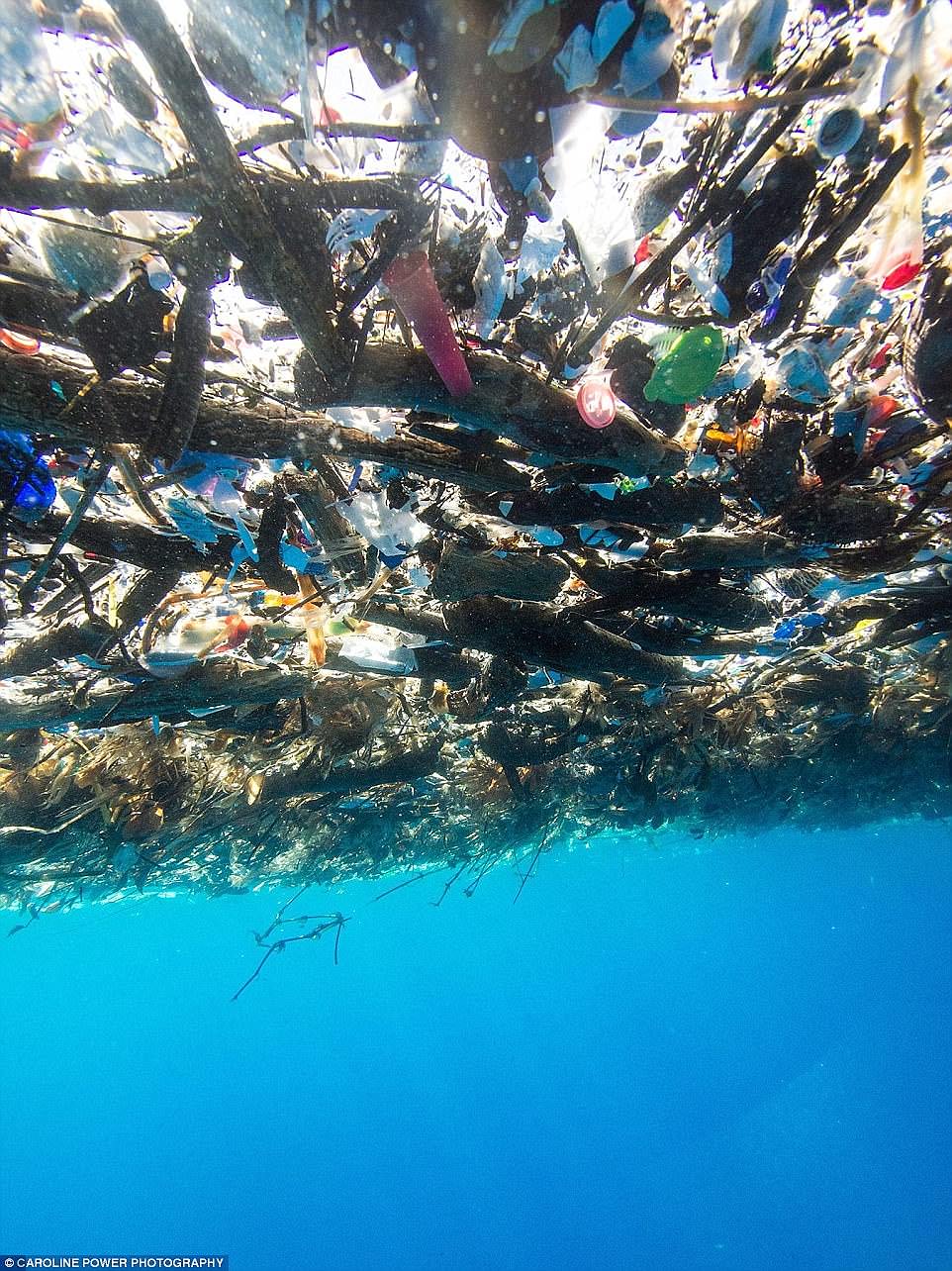Plastics. Microplastics. The single greatest polluter our oceans are facing. Significantly heightened talk of our ‘plastic problem’ and ‘the ever-evolving harm to our oceans’ have sparked much concern in recent years.
Wait, so what are microplastics? “Microplastics are small pieces of plastic, less than 5 mm (0.2 inch) in length, that occur in the environment as a consequence of plastic pollution”, according to Britannica.
So where do they come from? What’s their real harm? Let’s first talk about plastic, in a general sense.
Plastic was coined over 150 years ago, as a means to deter from using natural material. “The first synthetic polymer was invented in 1869 by John Wesley Hyatt, who was inspired by a New York firm’s offer of $10,000 for anyone who could provide a substitute for ivory”, according to Science History Institute.
This transition to synthetic versus natural materials for products was extraordinary at the time. No more strain for ivory, wood, metal and stone - humans made it possible to create a means for new products. I’m sure John Wesley Hyatt could never imagine the turbulent brew he had created for humanity 150 years later. The extremity of his creation.

NBC News
Like mentioned above, microplastics consist of tiny particles of plastic that slightly break down from pre-existing plastics. For example, beauty / health products, clothing and textiles (nylon, acrylic, spandex, etc.), marine sources, cigarette filters -- the list goes on. The size of these particles could feel seemingly innocent, but start thinking about micro on a macro level.
The problematic magnitude of oceanic life is surpassing our ability to combat the problem. This is bigger than ‘let’s stop using straws so we can save the turtles’. This cannot be expunged by solely examining a single micro-element of the whole.
Sea life such as fish, turtles, and sea mammals, consume these microscopic plastics, at times resulting in suffocation. In March of 2019 in the Philippines, a local natural history museum got a call about a very distraught looking whale swimming close to shore - it didn’t seem to have much life left. Once the male whale was identified and given an autopsy, more than 88 pounds of plastic were found inside the animals’ stomach.

National Geographic
From inspection of Darrell Blatchley on National Geographic, “‘Plastic was just bursting out of its stomach,’ he said. ‘We pulled out the first bag, then the second. By the time we hit 16 rice sacks—on top of the plastic bags, and the snack bags, and big tangles of nylon ropes, you're like—seriously?’.
His son, who was attending the necropsy, said ‘Dad, how did it even live this long?’”.
According to Habits of Waste within a year, “the average American uses 167 disposable water bottles”. 88 pounds of plastic debris was found inside the whale. According to Recycling Today, the average weight of a 16.9-ounce (half-liter) single-serve PET (polyethylene terephthalate) bottle of water is 9.25 grams”. When calculations are done, the plastic inside the whale equates to 4,315 empty water bottles.
When processing this information, my mind wanders to the entirety of sea-life that are consuming microplastics. This is an inherently simple cycle. We too are involved in the consumption of microplastics.
These plastics travel from our waste consumption, into landfill or worse - tossed straight into the sea, the plastics begin their slow break-down process, sea-life mistakes particles for food and consume these said plastics, commercial fishing, and then wallah - the once thriving salmon is now on our plates, and into our own systems.

Just as alarming as our reality is, this cycle is transferring into the pre-existing. Four ultrasounds of healthy mothers just two months ago, found microplastics within the placentas of unborn babies. From The Guardian, “A dozen plastic particles were found. Only about 4% of each placenta was analysed, however, suggesting the total number of microplastics was much higher. All the particles analysed were plastics that had been dyed blue, red, orange or pink and may have originally come from packaging, paints or cosmetics and personal care products.
'It is like having a cyborg baby: no longer composed only of human cells, but a mixture of biological and inorganic entities,’ said Antonio Ragusa, director of obstetrics and gynaecology at a hospital in Rome”. Our consistency of plastic to consumption ratio is obviously evolving at an alarming rate, on the rise to creating said ‘cyborg babies’.
Where else can microplastics stem from? Clothing. Specifically, synthetic fibers such as nylon, spandex, acrylic, and the dreaded polyester, containing polyurethane. Polyurethane is a thin typically layered on top of polyester, to create durability, stretch or a waterproof quality. This is considered toxic, not only for the environment, but for our own bodies. These synthetic fabrics contain many toxins and chemicals, as such releasing chemicals into the body while sweating. Formaldehyde, ammonia, cadmium and chromium, and sulphuric acid, to name a few, are toxins that are incorporated into such synthetic fabrics.
Moreover, since these fabrics are treated so intensely, innately, slight chemical reactions occur when washing clothing. But that being said, the amount of microfibers shed can’t be that bad right? Not exactly. “Recent estimations have assessed that synthetic clothes contribute about 35% to the global release of primary microplastics to the world oceans, thus becoming the main source of microplastics”. According to Nature Briefing, “The release of microplastics from synthetic clothes is mainly caused by the mechanical and chemical stresses that fabrics undergo during a washing process in a laundry machine, which lead to the detachment of microfibres from the yarns that constitute the textile”.
Where do these microplastics conglomerate within the ocean? Well they definitely find their way into every crack and crevice in our surrounding waters. The Maldives Archipelago consists of 1,192 islands within the Indian Ocean. “In 1992, the government added one more—an artificial construct that serves as a landfill, where 500 tons of trash are dumped every day”. This island consists majorly of tourists, creating a significant amount more waste than any other within the area. “A single tourist produces almost twice as much trash per day as a resident of the capital city of Malé, and five times as much as residents of the other 200 populated islands”, from National Geographic.

Daily Mail.
The Maldives are a developing nation that cannot properly manage waste that suffocates the islands. And that’s just the start. Recent analysis has identified the island as having the highest number of microplastics worldwide. Marine biologists have come to realize these microplastics are relatively the same size as many prey consumed by sea life species. When diving deeper into the specific amounts within certain species, “Of 71 trigger fish collected by the researchers, all had plastic in their bellies, on average eight fibers per fish”.

Daily Mail.
All debris is almost entirely broken down into microplastics. “80 percent of plastic in the ocean is estimated to come from land-based sources, with the remaining 20 percent coming from boats and other marine sources” from National Geographic. Yes, we are the culprit. The Patch is estimated to be twice the size of Texas, just floating along, a being of its own.
Marine life mistakes much of these plastics as jellies, and fish eggs. Many seabirds become entangled within the dreadful plastic six-packs. We prioritize Budweiser brews just long enough to drink them, then we’re satisfied, and we could care less about the aftermath, the proper disposal of them.
We will never know where our garbage goes, but we will know how we took care of our waste.
What can we do to combat this self-induced mess? There are always options, no matter how deep the hole is we’ve created. But the important part is making sure we are cognizant of our individual footprint created by seemingly minute decisions.
Look into an option such as the Cora Ball to deter some of your fibers from waterways leading to our oceans. Honestly, the amount of microfibers / microfibers these devices are able to catch aren’t significant enough for my liking, but if you are someone who has a decent amount of synthetic clothing, as well as wash your clothing frequently, this is definitely an impactful purchase. As well, it catches approximately 30% of fibers during each wash. As of now the brand advises throwing fibers into your waste-can, but confirms their continuous research for better options moving forward. The Cora Ball can be recycled, but contact the brand for the best recycling options. Nevertheless, keeping fibers out of our waterways is the top priority. Any action is better than none at all.
Research a brand or type of fabric. Dive into your personal love affair with clothing and what is important to you when acquiring clothing. Cut down on plastic consumption in all aspects of your life - be cognizant of plastic bottles, films, unnecessary packaging, and single-use coffee cups, to name a few. Educate yourself on the realities of each garment produced. Understand the detriments of synthetic / cheap clothing in all regards.
Hopefully the above has given you reason enough to constantly re-think the decisions you make, even if they may seem too complex in the moment. I promise the slight positive changes you make will alter your relationship with consumption. It’s a beautiful feeling.
 is here! Shop now, pay later in 4 easy installments
is here! Shop now, pay later in 4 easy installments
